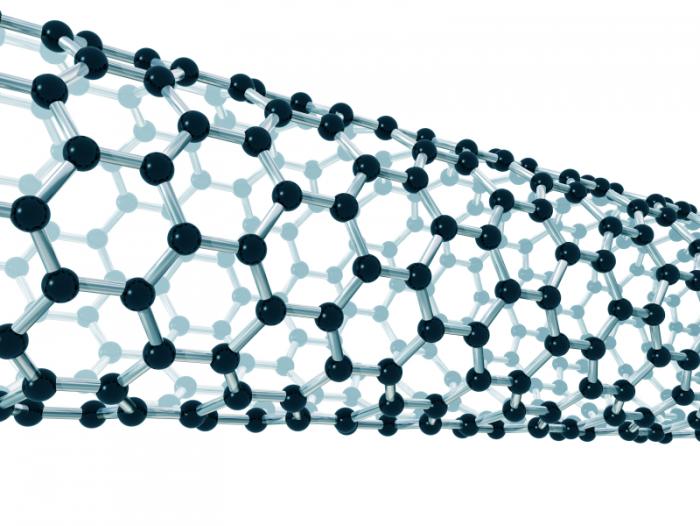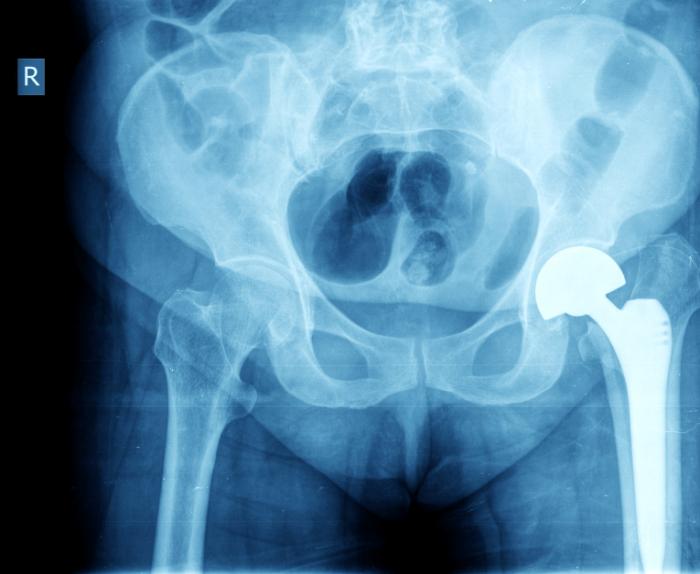A vital goal of diagnostic medicine is to be able to diagnose medical problems as swiftly as possible, enabling clinicians to treat patients before any irreversible or long-lasting damage can occur.

Nanosensors are made from carbon nanotubes, each 100,000 times smaller than a strand of hair.
Speeding up the process of diagnosis is a major focus of research. Recent studies reported on by Medical News Today include one study that found a new blood test could predict a woman’s risk of breast cancer recurrence almost 8 months before visible signs appeared.
Another study published in August identified a natural compound found in the breath as a biomarker of early-stage cirrhosis of the liver. This biomarker could one day form the basis of a breath test to diagnose this disease.
One problem that arises with diagnosing medical conditions is that the symptoms of some conditions only arise after a certain amount of time. By the time these symptoms come to the surface, the underlying condition will have progressed to a stage at which its treatment is much more complicated than it would have been had the problem been discovered earlier.
The most obvious example of this problem would be cancers such as pancreatic cancer that often do not cause any signs or symptoms during their early stages, only causing symptoms once the cancer has spread to other parts of the body.
But this problem is a common one. Another example would be when an implant – a hip implant, for example – becomes infected or inflammation causes prohibitive scar tissue to form. By the time it becomes apparent that a hip implant has become infected, however, the only solution is to remove the implant and insert a new one.
This week, MNT spoke to Thomas Webster, a professor and chair of the Department of Chemical Engineering at Northeastern University in Boston, MA, about his team’s current work in dealing with this issue.
“What we quickly realized in our medical care system today is that a lot of what we do is very reactionary,” he said.
In this Spotlight, we take a look at how Prof. Webster and his colleagues are looking to move away from a reactionary model of health care with the development of nanosensors – a new form of technology that will be able to monitor the build-up of bacteria on implants and warn clinicians when treatment is required before the problem escalates.
Nanotechnology: small size, huge potential
To say that nanotechnology is tiny would be an understatement – a single nanometer is one-billionth of a meter. A sheet of paper is around 100,000 nanometers thick. A single-walled carbon nanotube with a diameter of 1 nanometer is 100,000 times smaller than a strand of hair. In comparison, a strand of hair is 100,000 times smaller than a house 10 meters wide.
It can be difficult to visualize just how small this is, but the benefits that come with applying nanotechnology to medicine are much easier to see. Researchers have already managed to use nanotechnology to improve biological imaging so that clinicians can detect accumulations of minuscule particles or molecular signals associated with health problems.
Prof. Webster told MNT about previous projects in which he and his colleagues have investigated the potential of using nanoparticles to treat bacterial and viral infections.
Some chronic bacterial infections are caused by bacteria growing in biofilms – what T. Bjarnsholt of Copenhagen University in Denmark describes as “slime-enclosed aggregates.” Biofilms are the cause of conditions such as pneumonia in cases of cystic fibrosis and implant-associated infections.
“Drugs and antibiotics won’t penetrate these biofilms,” explained Prof. Webster, “so the only thing to do is just to operate and remove that biofilm almost by hand by scooping it out of the tissue.”
Nanoparticles could change this state of affairs, however, as Prof. Webster informed MNT:
“So we’ve been able to develop these nanoparticles that can actually penetrate those biofilms and then kill the biofilm, regenerating healthy tissue in the process so that you wouldn’t need that type of operation.”
Elsewhere, Prof. Webster and his colleagues have worked on developing nanoparticles designed to destroy specific viruses. Gold nanoparticles are made to attach to viruses such as Ebola or influenza; by heating the particles with certain infrared wavelengths, the nanoparticles can then destroy the structure of the virus.
Prof. Webster summarized what he sees as the benefits of nanotechnology for MNT:
“We think there’s a strong promise for nanotechnology that’s used in medicine, obviously because the small size allows you to penetrate cells, get inside cells and manipulate their function in ways that you can’t do with conventional material.”
There are huge steps that can be taken in medicine with the help of nanotechnology. At present, however, the focus for Prof. Webster and his team is to look at how this technology can be used to improve conventional forms of treatment, and this is where nanosensors come in to play.
A doctor inside the body
“Ideally, we want to create sensors that behave a lot like natural cells in the body,” Prof. Webster explained to MNT. “Many of us would say the human body is the ultimate sensor. We can sense things much better than anything we have made synthetically so far.”
Constructing a sensor using nanotechnology to mimic human immune cells that circulate around the body, indicating when something is wrong and responding positively to any problems that surface may be possible one day in the future, but for now, it remains a big step to take.

So far, the team has trialed their nanosensors by growing them on titanium hip implants and catheters.
Instead, Prof. Webster and his team have chosen to transform conventional medical devices that are implanted into the body by giving them sensors – nanosensors – that can determine a problem and respond to it if and when it arises.
“What we’ve done as a first step is taken titanium hip implants – like a hospital would buy – and then grown material out of the surface of that hip implant that can actually electrically sense what type of cell is attaching to the surface,” he reported.
The sensors, constructed from carbon nanotubes, are capable of sensing whether cells attaching to the implant are bone cells (as would be hoped), bacteria or inflammatory cells. The latter two cell types could indicate infection or scar tissue formation that might cause problems for the patient.
Inbuilt into the sensor is a radio frequency that sends signals to an external computer, from which a clinician can access all of the information transmitted by the sensor. From this information, for example, a clinician can see whether the implant is free from bacteria, has a small amount of bacteria that the body will deal with, or a large number of bacteria requiring antibiotic treatment before a fully-fledged infection can take hold.
“Obviously that last scenario would be a much better scenario than what occurs today,” stated Prof. Webster. “Essentially today, we don’t know when there’s been too much infection or too much scar tissue until it’s too late and we need to pull the implant back out.”
As well as hip implants, the team has tested their nanosensors on catheters using the same approach. People who receive indwelling catheters are susceptible to infection, meaning that nanosensors monitoring levels of bacteria could have a significant impact on their care.
A common concern that people have with nanotechnology inside the human body is whether the materials used are toxic. Prof. Webster and his team have spent a lot of time in ensuring that the materials they used – carbon nanotubes and some additional polymers – are nontoxic.
What is more, they have observed in some early trials with animal models that the materials used have even managed to improve bone growth when used with hip implants. So even if the sensor does not identify any problems, it is still able to promote bone growth more than a regular titanium implant.
“It’s the first step toward a better implant,” said Prof. Webster, “but ultimately our goal is to really design these sensors that act like the human body does.”
On the next page we look at how nanosensors might generate energy and data and how the nanosensors could be used to treat problems before they can cause damage to the body.
- 1
- 2
- NEXT ▶